what combination of factors was necessary to begin the industrial revolution
The Industrial Revolution began in Bully Britain and then spread across the The states and the rest of the world. The revolution in Britain is oftentimes called the First Industrial Revolution while the later worldwide revolution is referred to as the Second Industrial Revolution. There is a debate among historians about the precise dates of the get-go and terminate of the First Industrial Revolution. Information technology is by and large believed to have taken place in the time between 1760 and 1840 in Britain primarily due to innovations in machine technologies that led to college productivity. The Industrial Revolution marks a major turning indicate in history every bit it hugely impacted the fashion societies in the earth would office in the years to come. Know what started the Industrial Revolution and why it originated in Groovy Britain through its 10 most important causes.
#1 Political and Economic competition in Europe
Though the European states had frequently fought amongst each other for many centuries, by the mid-18th century many of them were ascension colonial powers. What was at stake now was competition for being a global world superpower. In the commencement of the 18th century, Great britain had simply a quarter and two thirds the population of France and Spain respectively. Information technology was thus under constant pressure fighting against these perennial and larger enemies. The British engaged in many major wars during this period similar Austrian war of succession (1740-48), 7 Years ' War (1756-63), American Revolutionary War (1775-83) and the Napoleonic Wars (1803-xv) to name a few. The need to keep upwardly with the enemy put tremendous pressure on the country to produce more. This drastic demand incentivized the invention of labour-saving devices, which played a cardinal function in the revolution.

#two Scientific Revolution in Europe
Most historians practise not agree on the exact flow of the Scientific Revolution in Europe. Many define it within the times of Nicolaus Copernicus (1473-1543) and Isaac Newton (1642-1727). The Scientific Revolution refers to European developments changing conceptual, cultural, social and institutional relationships involving nature, knowledge and belief. In the early on 16th century, Copernicus presented his uncomplicated heliocentric hypothesis. With the bold claim that the Globe moves around the dominicus, Copernicus challenged tradition, the authority of the scriptures and the established views in the universities and the church. In the coming decades, Europe gradually became more open to ideas with the scientific works of several prominent scientists including Galileo Galilei (1564-1642), René Descartes (1596-1650), Christiaan Huygens (1629-1695) and, of course, Isaac Newton. The ascension in scientific temperament and a lodge more open to ideas formed a fertile ground for innovations and newer ideas.
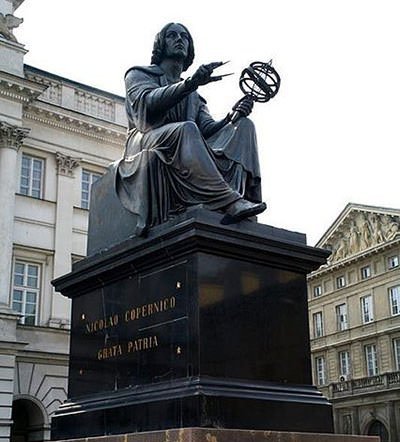
#three Agricultural Revolution in Britain
The British Agricultural R evolution refers to the unprecedented rise in agricultural production in Britain from the 17th to mid-19th century. Agricultural changes started in Europe in Kingdom of belgium and Holland. They revolved around intensive farming methods like:-
Crop rotation – the practice of growing a series of dissimilar types of crops in the same area in sequential seasons to assistance restore found nutrients
Enclosed fields – putting mutual grazing grounds under cultivation past establishing exclusive ownership of those lands.
Using an improved version of the Chinese Turn
Selective breeding and heavy manuring
British farmer Charles Townsend (1674 – 1738) popularized these ideas in Uk increasing the food product. The enclosure movement started where a lot of land was confiscated by the big firms and it gave them the freedom to implement their own ideas. Jethro Tull (1674 – 1741) devised a new method of sowing seeds using a drill instead of dispersing them past mitt saving labour and contributing in higher agricultural yields. The discovery of new world crops like corn, love apple and especially murphy was a boon. The high caloric value of murphy, easier growing methods and maintenance, was vastly helpful in curbing hunger. Increased food product meant that the British population could exist fed at lower prices with less effort than always earlier. This rise in productivity accelerated the decline of the agricultural share of the labour force and add together ed to the urban workforce on which industrialization depended.
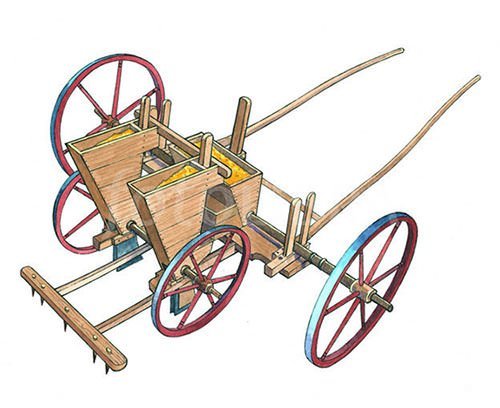
#4 Government Policies
During 18th century Britain there was a long time constitutional monarchy and the nation was politically more stable than its challengers like French republic and Spain. This allowed for better policy formation and implementation. The government maintained a patent system which gave sectional rights over innovations to their inventors for a express number of years. This hugely helped in financing of newer ideas. The enclosure system allowed individual buying of farm lands which were common before thereby encouraging capitalis k and forming the industrial class of the future. Some other important policy was allowing the inflow of immigrants for enhancing the skill and development of the industry which besides led to the weakening of the guilds. Opposite policies in other European states is oft cited every bit a major reason for their delayed industrialization.
#5 Political influence over India and other colonies
By the mid-18th century Britain had a sizeable overseas empire and their victories at the b attle s of Plassey and Bux a r had given them political influence over major parts of Bharat, especially in the cotton wool industries and trade hub of Bengal. Control over India, the cotton producing and manufacturing hub of the earth, would fuel the demand for invention of cotton wool spinning machines in Britain. The natural, agricultural, man and mineral resources of India formed the backbone of Britain and it was made the jewel in the crown of the British Empire. The empire of Britain continued to aggrandize becoming the dominant global ability for close to 2 centuries. The British colonies were a source of raw materials and labour; and also served as markets for the Industry.

#half-dozen Innovations in Technology
Innovation and new technology was obviously the central factor in the success of Industrial Revolution. In 1700, Britain was known for its woollen industry but cotton textiles had many production advantages over other types of cloth. It was comparatively cheaper, stronger and more hands coloured and washed than wool or linen. However there were two challenges due to which Britain did not grow cotton wool: its cold climate; and not enough manpower to see the demand. Thus they traded with cotton wool producers far beyond the world, such as India and the southern United States. Yet, it was the innovations in weaving techniques that enabled the ir i ndustry. In 1733, James Kay improved on the old handloom making his simple flying shuttle which doubled worker productivity. The master challenge was to create a subtle mechanized device for pulling and twisting the cotton fiber just the right corporeality to create a strong thread. The invention of the Spinning Jenny by James Hargreaves in 1764 solved this problem and increased the productivity eightfold. In 1769, Richard Arkwright worked on the ideas of Jon Kay and devised a method to hook up the Jenny to a water cycle calling information technology the h2o frame. This invention led to the first mill that completed the process of raw cloth to finished cloth at a single signal. This then ushered the factory system, which was key to the Industrial Revolution.
The defining invention of the Industrial Revolution was perhaps the Steam Engine of James Watt in late 1760s which was primarily invented to pull water from the coal mines. However, it also powered the textile industry with innovations like the power mule and ability loom. The steam powered engine immune industries to movement away from water (h2o frames were used). Well-nigh chiefly it led to the steam powered carriage allowing transportation of appurtenances like never before.
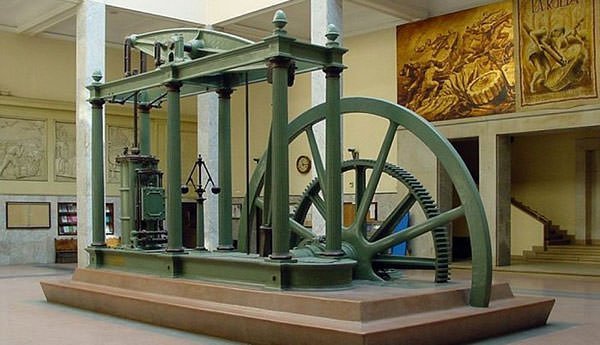
#vii Growth in Population
In the year 1700, United kingdom of great britain and northern ireland had an estimated population of effectually four million. This was a quarter of the population of its European rival France and effectually four% of Republic of india and China, which were the leading economies of the fourth dimension. In a globe without machines lack of working hands was a large disadvantage. The agricultural revolution gave the society plenty food and the population grew rapidly throughout the century, more than doubling itself in a hundred years. This led to Uk having enough labour to feed its i ndustrial growth.
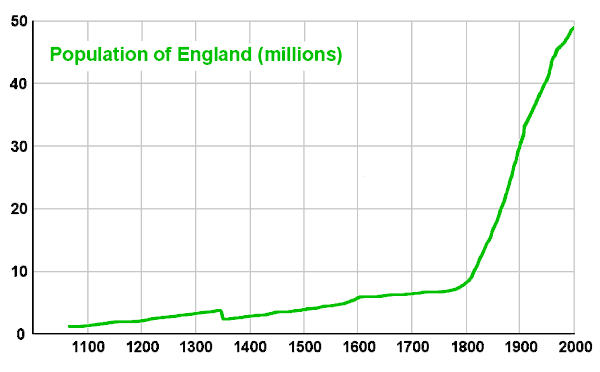
#8 Availability of Coal and Fe
United kingdom of great britain and northern ireland was blessed with vast coal and iron reserves which proved valuable for the development of industries. Large quantities of coal was required for smelting of fe ores, transportation etc. The demand would further increase with the invention of the coal powered steam engine. This necessitated comeback in the techniques of coal mining.
Continuous efforts were made to refine atomic number 26 and brand it cheaper which allowed England to finish importing iron from northern Europe and instead to create the largest fe manufacture in the world. This cheaper and stronger iron galvanized every major manufacture including construction, tools, shipbuilding, textile inventions, steam engines and railroads.
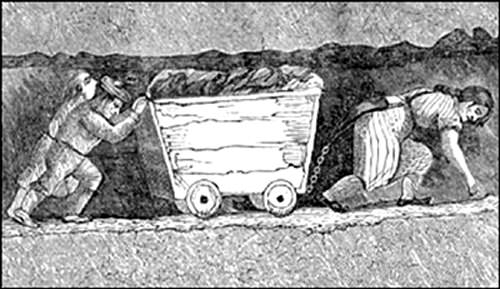
#9 Financial Innovations – Commercialism and Entrepreneurship
United kingdom of great britain and northern ireland had financial institutions in place since the early on 18th century; such every bit a primal banking concern, canton banks and a stock exchange to finance new ventures. By 1760, the rising political and commercial influence of Britain in the world and profits it had enjoyed due to the booming cotton fiber and trade industries, immune wealth (capital letter) to be created. The rise of Capitalists increased the demand for security for their money; opportunity for investment and growth; and availability of circulating capital for everyday running. Specialist banks, with cognition of certain industries and areas, grew up to accept full advantage of this situation. Banks made a profit past keeping a cash reserve and lending out sums to gain interest something that is usually known as the partial reserve arrangement today. The early entrepreneurs were capitalists, financiers, inventors, merchants and salesmen; and the businesses were individual ly based and minor. With time, shareholders and articulation stock companies emerged which changed the time to come of how business would be run.
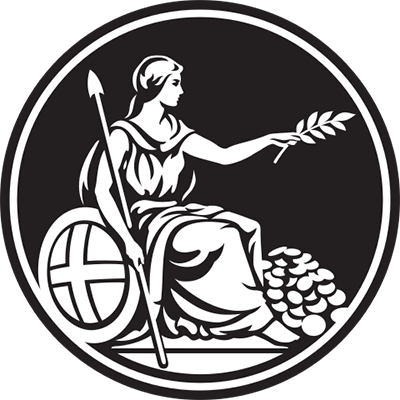
#10 Ship Systems
Transport systems in Uk were rudimentary in the early 18th century. With the rising economic system there was force per unit area to improve the roads. In the 1750s, the Turnpike trusts emerged. The Turnpike trusts were groups of people who maintained the roads full time and received toll in render of their services. There were close to 1700 such groups until the government took over. The canal systems were built and soon became a popular source of transportation since they were economical and reliable. Boats on the canal were pulled by horses that walked on either side of the culvert on tow paths. Early railways consisted of wooden tracks linking coal mines to rivers and canals; and carriages were pulled by horses. The invention of the steam engine and iron technologies later powered the transportation manufacture. The claiming of transportation which could hinder the progress of the Industrial Revolution was thus finally overcome.
Source: https://learnodo-newtonic.com/industrial-revolution-causes
Post a Comment for "what combination of factors was necessary to begin the industrial revolution"